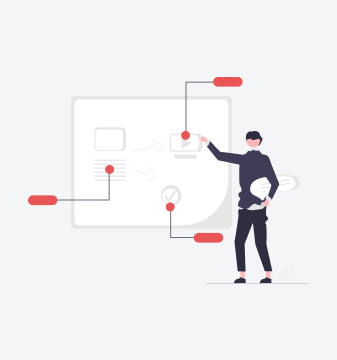Defining your target market is crucial in developing an effective marketing strategy. A clear understanding of your best customers allows you to tailor products, messaging, and experiences to their specific needs and preferences.
This article outlines techniques and tools for researching and segmenting your target market to maximise the return on your marketing efforts. Read on to learn more.
What is a Target Market?
A target market is a defined group of consumers within a larger market who are identified as the most likely buyers of a product or service. Businesses can tailor their marketing efforts by targeting a specific segment to align with this group’s distinct needs, interests, and behaviours. This approach enables businesses to allocate resources more effectively instead of targeting a broad, generalised audience.
Why Analyse Your Target Market?
Conducting target market analysis brings several key benefits:
- Focuses marketing efforts: Understanding your best customers allows you to allocate budget and creative resources toward the messaging, platforms, and channels that will most effectively convert that particular group.
- Optimises customer experience: You can design products, services, and experiences specifically for the preferences and pain points of your target customer group, leading to higher satisfaction.
- Informs product development: Knowing detailed attributes of your most valuable customer segment allows you to develop products and functionality purpose-built for their needs.
- Enhances personalisation: Use segment insights to craft targeted, relevant messaging and experiences demonstrating a deep understanding of a subgroup’s motivations and preferences.
- Tracks performance: Analysing the attributes and behaviours that define target segments facilitates assigning metrics and KPIs to monitor marketing performance and ROAS.
Critical Steps for Conducting Target Market Analysis

Follow these core steps to research, analyse and define your optimal target audience groups:
1. Review Existing Sales and Marketing Data
Analyse historical performance metrics and feedback to uncover patterns related to your best customers:
- Sales data: Review transaction details to reveal best-selling products, sales cycles, average order values and repurchase rates.
- Marketing analytics: Assess performance using demographic factors like age, gender, and location to identify high-converting segments.
- Customer profiles: Compile demographic, psychographic and behavioural data based on surveys, feedback forms or recorded interactions.
- Staff insights: Consult sales reps, customer service agents, and front-line staff who regularly interact with diverse customer groups.
2. Profile Your Ideal Customers
Compile a detailed composite sketch outlining the demographic, geographic, psychographic, behavioural and other attributes of those purchasing from you most actively. Ask:
- Provide their age, income range, occupation, education level, and other relevant statistics.
- Identify their geographical concentration and note any regional patterns.
- Describe their attitudes, values, interests, priorities, and personal styles.
- Explain what motivates their purchase decisions for products similar to yours.
- Detail how they use your product differently compared to more casual customers.
3. Identify Market Segments
Organise your customers into different groups based on their buying habits and preferences. Give each group a name that describes them well. Then, focus on the 1-2 most important customer groups to ensure their happiness and continued loyalty.
4. Size Your Market Opportunity
For each priority segment, quantify the total addressable market opportunity:
- Primary research: Use surveys or focus groups to ensure the profiles we’ve created represent real people.
- Secondary research: Look at data from other sources to guess how many people in the market fit into each group we’ve identified.
5. Spot Trends and Gaps
Keep market analysis fresh by tracking shifts in segment behaviours, needs and responses over time.
- purchase triggers
- product feature priorities
- channel or messaging preferences
Also, emerging subsets and under-served niches should be identified for possible expansion focus.
6. Refine and Optimise Ongoing Efforts
Keep updating your marketing strategies to match the changing needs of your target customers. Personalising your marketing to these groups can increase customer conversions, loyalty, and long-term value.
Essential Tools for Target Market Analysis
The current array of data tools enables accurate monitoring, quantification, and examination of customer behaviours and market segments.
- CRM Database: Centralises transaction data and interactions to identify trends.
- Marketing Automation Platform: Codes, tracks, and compares performance by market segments.
- Google Analytics: Leverages cohort, demographic, and user metric reports to isolate signals.
- Social Media: Listens to segment conversations, monitors brand mentions, and tracks engagement.
- Surveys: Collects direct feedback about needs, preferences, and satisfaction.
- Predictive Analytics: Uses statistical modelling to refine estimates of segment potential.
Conclusion
Thorough target market analysis yields essential customer insights for informing strategic decisions regarding product assortment, features, pricing, distribution channels, and brand experiences. Well-defined buyer personas enable resource allocation to focus on segment priorities and preferences, directly influencing growth. Sustaining a metrics-driven conversation about customer needs ensures that marketing efforts remain sharply targeted, even as targets evolve. By understanding your primary audience well, you can steadily establish market leadership.




